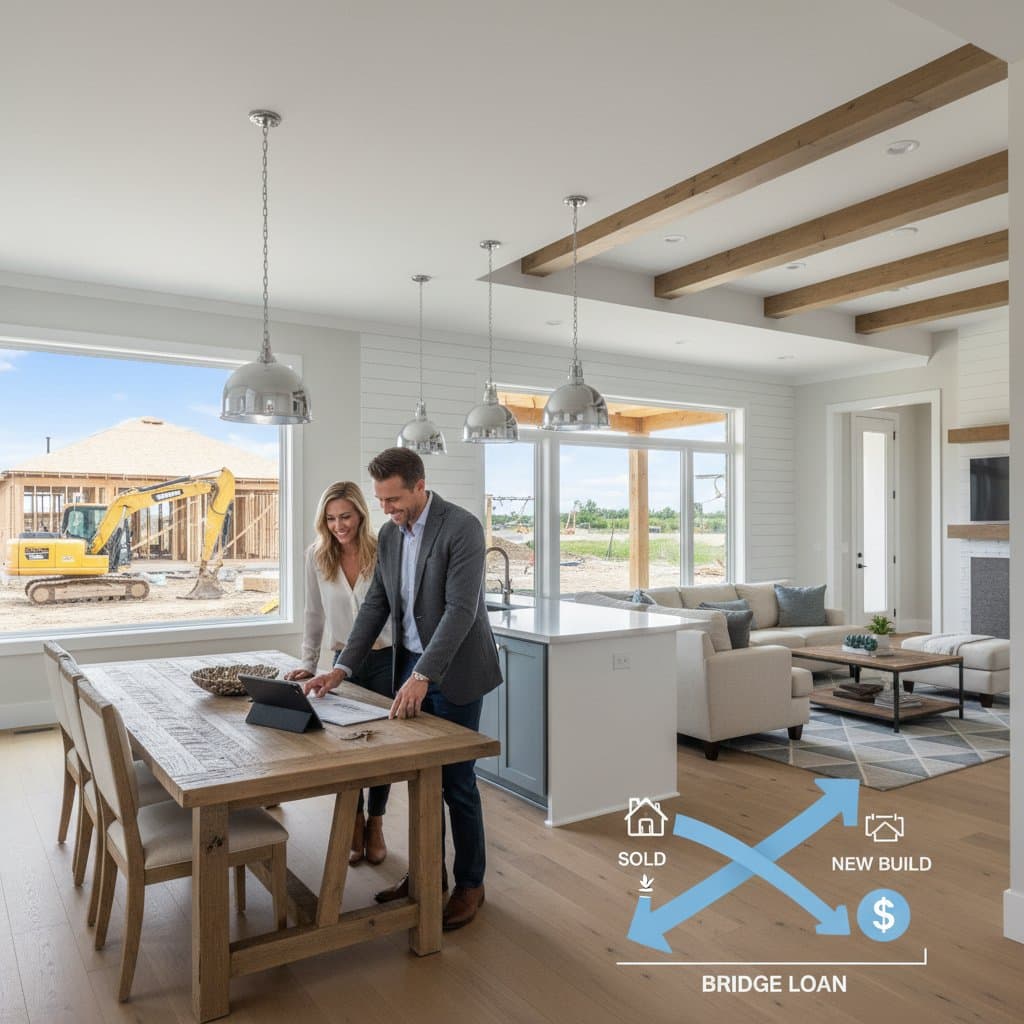2025 Bridge Loan Competition: Financing New Home Builds
Flipping through renovation sketches evokes the excitement of envisioning a custom home. These drawings capture initial ideas, yet the path from concept to completion often involves timing challenges. Homeowners frequently face delays when selling their current property before starting construction. Bridge loans address this gap, and in 2025, heightened competition among lenders has made them more accessible and cost-effective.
Bridge loans once served primarily developers and investors. Today, they enter mainstream discussions for custom home projects and rebuilds. Lenders lower rates and introduce innovative terms, enabling homeowners to view interim financing as a facilitator rather than a complication.
Reasons Bridge Loans Gain Prominence
Coordinating the sale of an existing home with new construction demands precise timing, which proves challenging. Bridge loans provide interim funding by accessing equity in the current property, allowing progress without awaiting the sale.
Previously, high interest rates deterred many borrowers. Recent adjustments by lenders include reduced margins and adaptable repayment options. Certain institutions integrate construction financing, creating efficient packages. This rivalry empowers borrowers to secure improved conditions.
Timing represents a key advantage. Bridge loans support immediate needs, such as deposits for structural framing, cabinet installation, or site preparation. Borrowers avoid pressuring a property sale, preserving the opportunity to execute plans methodically.
Distinctions from Conventional Mortgages
Traditional mortgages emphasize enduring financial arrangements. Bridge loans function as temporary instruments for defined periods, typically spanning several months to one year, depending on the provider.
Key differences include:
-
Objective: These loans span the interval between property sales or between initial planning and construction commencement.
-
Processing Speed: Approvals occur rapidly, surpassing standard mortgage timelines.
-
Repayment Options: Providers may permit interest-only installments until property disposition.
-
Security: The existing residence typically collateralizes the loan, underscoring the importance of equity assessment.
Beyond ease, these loans mitigate risks in volatile markets. Shifting construction timelines and prolonged sales cycles highlight the value of financial buffers in maintaining project momentum.
Impact of Current Lender Competition
Intense rivalry defines the 2025 landscape, with private entities, regional cooperatives, and major institutions vying for clients involved in ongoing or impending builds. Offerings vary to capture market share.
Certain lenders reduce interest rates incrementally for competitive edges. Others eliminate select fees or expedite processing. Promotions feature absence of prepayment penalties or integrated construction disbursements for enhanced cash management.
Borrowers benefit from this environment through increased negotiating power. For new build initiatives, evaluate not only rates but also installment structures, valuation protocols, and repayment pathways.
One homeowner shared her experience securing a bridge loan for lakefront construction pending townhouse sale. The favorable rate and interest-only structure allowed budget allocation toward premium materials, avoiding dual mortgage strains. Such accounts illustrate emerging trends.
Essential Considerations Prior to Commitment
Bridge loans appear straightforward, yet several factors require thorough review.
Interest Expenses
Lower rates notwithstanding, prolonged holding periods elevate costs if sales extend beyond projections. Incorporate buffer periods in financial planning.
Repayment Plan
Establish a definitive method for loan settlement, such as proceeds from existing property sale or integration into permanent construction financing.
Property Valuation and Equity Position
Providers scrutinize current home appraisals and equity levels. Substantial equity yields superior borrowing conditions.
Associated Costs and Schedules
Inquire about evaluation expenses, initiation fees, and prepayment stipulations. Low advertised rates may offset through ancillary charges.
Regional Market Dynamics
Rapid local sales reduce risk profiles. Slower markets necessitate extended durations or contingency measures.
Differentiating Standard and Construction Bridge Loans
Two primary variants exist. Traditional bridge loans facilitate transitions between property acquisitions or sales. Construction bridge loans support new builds or extensive renovations pending final funding.
Construction variants disburse funds progressively, aligning with project phases like foundation work or interior installations. This method ensures timely builder compensation and consistent advancement. It minimizes the complexity of multiple financing arrangements.
Collaborate with builders to synchronize funding releases with their payment schedules. Aligned timelines reduce operational disruptions.
Strategies for Optimal Negotiation
Lender competition favors prepared borrowers. Implement these steps for superior outcomes:
-
Obtain quotes from a minimum of three sources to identify variances. Marginal rate reductions accumulate significantly over time.
-
Request adaptable repayment provisions, particularly for uncertain sale durations.
-
Seek integrated packages merging bridge and construction elements.
-
Confirm comprehensive fee disclosures to prevent closing surprises.
-
Examine contract details regarding accelerated repayment and valuation dependencies.
Engage a mortgage specialist and articulate project timelines and objectives. Specialists uncover promotional opportunities or rate fluctuations overlooked by individuals.
Influence of Rate Fluctuations on Construction Budgets
Rate variations directly impact resource distribution. Modest bridge loan adjustments affect allocations for architectural selections, raw materials, or completion elements.
Consider enhancements like upgraded appliances or eco-friendly installations. Reduced interim costs enable investments in durable flooring or advanced insulation. Conversely, mid-project increases may require reallocations to essential areas.
Prioritize providers offering penalty-free early settlements. This provision supports refinancing or prompt closure upon permanent financing activation.
Sustaining Project Progress with Bridge Financing
With financing secured and construction underway, maintain meticulous oversight. Monitor disbursement timelines, interest obligations, and sale forecasts as integral components of project management.
This approach transcends mere transactions; it sustains forward motion amid scheduling obstacles.
As the structure emerges, the strategic use of bridge loans becomes evident. Witnessing foundational pours, material arrivals, or initial framing installations affirms the value of proactive financial planning in realizing envisioned spaces.
Steps to Secure Your Bridge Loan Today
Initiate by assessing equity and consulting multiple lenders. Align terms with construction phases for seamless execution. This preparation positions you to capitalize on 2025 opportunities, transforming transitional challenges into efficient pathways to homeownership.
